Now that P&H has unified the Mace brand across Britain, it plans to take the fight to rival symbol groups, says Fiona McLelland
Palmer & Harvey McLane has pulled off a feat that all the battles of Britain have still not managed to achieve. Scotland, England and Wales are now truly united.
Last month, the delivered wholesaler completed the deal to buy the Mace brand in Scotland from Somerfield, which had been haemorrhaging independent retailers to other symbols since it bought Mace from Aberness in 2004.
P&H, the UK’s biggest wholesaler, had been eyeing the business ever since it acquired the Mace brand in England and Wales from Booker Wholesale in 1999.
Now that it has finally succeeded in creating a symbol group covering the UK mainland, managing director Graham McPherson has his sights on creating a symbol group to rival Spar and Nisa-Today’s throughout the country.
McPherson has been with the company for 27 years, having started as an area manager before moving on to become operations director and finally MD. He is now in his 10th year in the role and clearly revelling in the opportunity to take the group on to the next level.
The plan is to grow its Scottish membership to 120 by next year. It won’t be an easy task. When P&H broached the deal with Somerfield there were 61 independent Mace retailers in Scotland, but 25 jumped ship to Spar by the time it concluded.
“We went into the deal with our eyes open,” says McPherson. “We knew that there was a lot of interest from other symbol groups because of the destabilisation of the situation with Somerfield and were aware that we wouldn’t get the lot.”
He adds: “The terms that we will be offering Mace retailers will be slightly better than they enjoyed with Aberness, but we’ve now got to prove to the Mace membership that we can provide the same level of service they enjoyed with Aberness. Then we will look to tap into our own customer base to develop the symbol.”
Mace’s traditional heartland in Scotland has been in the north, owing to Aberness’s location in Aberdeen, but P&H has been quick off the mark and has already converted two new stores in the central belt.
Before P&H got its hands on the Mace brand in Scotland, it had developed the Your Store symbol for its independent customers north of the border. The plan is to gradually convert these all into Mace stores, as McPherson says that his customers want the more powerful brand.
P&H also supplies its Your Stores in Northern Ireland. J&J Haslett owns the Mace format over the water, but McPherson is watching that business closely, as he says he would love to have the full house in the UK. “We would want Mace in Northern Ireland if we could get it - never say never.”
In the meantime, McPherson is more than content to develop his current resources. He intends to raise the standards throughout the symbol and says that the way to drive sales is to add more discipline in-store to get the product in the right place at the right time.
“If we can get a disciplined retailer, we can grow their volume and grow ours. And now that we have the symbol in Scotland, England and Wales, it will give Mace a new impetus at P&H. We have had it for six years and we are now putting more people in place to give more retail development and promotional support. Independent business is still a huge chunk of our business and it’s hugely important from a profitability point of view. The more we can build our symbol business, the more loyal and professional the customer base will be.”
P&H still has a very strong customer base in the CTN market, and although that market is not enjoying the same growth as convenience, he says that it is an important part of the business.
“There are still opportunities for well-run and well-merchandised CTNs - the market is certainly not a lost cause. Part of the problem has been a lack of investment in the sector. At the end of the day, if people invest in their CTN, or symbol, and run that store as a professional retail operation, there are profits to be made.”
McPherson says sales have grown 44% over the past five years, compared with an increase of 18% for overall delivered wholesale. “We have outperformed the market. Last year, turnover was up 2.5% to £3.48bn (excluding phonecards), with gross profit up 3.6%.”
And he expects growth of 4% this year, although the early signs are that sales could be even better. For the first three months of this financial year, tobacco is up 4%, non-tobacco is up 6.5%, chilled and frozen sales are up 7.5% and alcohol is up 6%. That percentage is set to rise significantly as sales from the Wine Cellar chain are yet to kick in. P&H recently clinched a £40m contract to supply Wine Cellar with all its alcohol.
But times are tough for the delivered wholesale sector. The European working time directive, which came into effect in April and limits drivers to a 48-hour working week, has had a huge effect on the industry.
“The directive has added cost to distribution and on top of that you’ve got rising fuel prices and congestion charges,” says McPherson. “It all creates pressures for the delivered wholesaler and we have to look at being more productive to offset the effects of higher distribution costs.”
One major initiative will have a large part to play in increasing that productivity, says McPherson. P&H has tested a new scheduling system for drivers called Roadnet and the roll-out has begun. Because the 48-hour working week has led to a shortage of drivers, P&H is also actively recruiting Polish workers to fill positions.
An area of the business that has proved particularly successful is the ever-growing Snacksdirect business. Sales rose 40% in the past year and the numbers of vans in the fleet leapt from 103 to 153. This year, McPherson wants to increase sales by 29.5% to break the £50m barrier.
His optimism received a boost when a four-week sales drive picked up another 1,200 new business customers. “Snacksdirect has grown significantly because we are the only national and professionally run van sales operation in the UK. It has become a big contributor to P&H profit and we are looking at how we can roll out the same format to other categories.”
In fact, McPherson says discussions have progressed so far with an undisclosed supplier that a new category will get the Snacksdirect treatment within the next year.
Meanwhile, he plays down speculation that his retirement is imminent. “I don’t intend to part with P&H and I plan to be part of the business for some years to come. We have a very good and very close working management team with lots of opportunities to develop together. Our stability is really helped by being a management buyout team. The ownership plays a huge part in our success - we have good people who look at this as more than just a job.”
Now, he says, the challenge is to take the fight to Nisa-Today’s and Spar on a UK-wide level. In the current wholesale market, it makes a whole lot of sense.
Palmer & Harvey McLane has pulled off a feat that all the battles of Britain have still not managed to achieve. Scotland, England and Wales are now truly united.
Last month, the delivered wholesaler completed the deal to buy the Mace brand in Scotland from Somerfield, which had been haemorrhaging independent retailers to other symbols since it bought Mace from Aberness in 2004.
P&H, the UK’s biggest wholesaler, had been eyeing the business ever since it acquired the Mace brand in England and Wales from Booker Wholesale in 1999.
Now that it has finally succeeded in creating a symbol group covering the UK mainland, managing director Graham McPherson has his sights on creating a symbol group to rival Spar and Nisa-Today’s throughout the country.
McPherson has been with the company for 27 years, having started as an area manager before moving on to become operations director and finally MD. He is now in his 10th year in the role and clearly revelling in the opportunity to take the group on to the next level.
The plan is to grow its Scottish membership to 120 by next year. It won’t be an easy task. When P&H broached the deal with Somerfield there were 61 independent Mace retailers in Scotland, but 25 jumped ship to Spar by the time it concluded.
“We went into the deal with our eyes open,” says McPherson. “We knew that there was a lot of interest from other symbol groups because of the destabilisation of the situation with Somerfield and were aware that we wouldn’t get the lot.”
He adds: “The terms that we will be offering Mace retailers will be slightly better than they enjoyed with Aberness, but we’ve now got to prove to the Mace membership that we can provide the same level of service they enjoyed with Aberness. Then we will look to tap into our own customer base to develop the symbol.”
Mace’s traditional heartland in Scotland has been in the north, owing to Aberness’s location in Aberdeen, but P&H has been quick off the mark and has already converted two new stores in the central belt.
Before P&H got its hands on the Mace brand in Scotland, it had developed the Your Store symbol for its independent customers north of the border. The plan is to gradually convert these all into Mace stores, as McPherson says that his customers want the more powerful brand.
P&H also supplies its Your Stores in Northern Ireland. J&J Haslett owns the Mace format over the water, but McPherson is watching that business closely, as he says he would love to have the full house in the UK. “We would want Mace in Northern Ireland if we could get it - never say never.”
In the meantime, McPherson is more than content to develop his current resources. He intends to raise the standards throughout the symbol and says that the way to drive sales is to add more discipline in-store to get the product in the right place at the right time.
“If we can get a disciplined retailer, we can grow their volume and grow ours. And now that we have the symbol in Scotland, England and Wales, it will give Mace a new impetus at P&H. We have had it for six years and we are now putting more people in place to give more retail development and promotional support. Independent business is still a huge chunk of our business and it’s hugely important from a profitability point of view. The more we can build our symbol business, the more loyal and professional the customer base will be.”
P&H still has a very strong customer base in the CTN market, and although that market is not enjoying the same growth as convenience, he says that it is an important part of the business.
“There are still opportunities for well-run and well-merchandised CTNs - the market is certainly not a lost cause. Part of the problem has been a lack of investment in the sector. At the end of the day, if people invest in their CTN, or symbol, and run that store as a professional retail operation, there are profits to be made.”
McPherson says sales have grown 44% over the past five years, compared with an increase of 18% for overall delivered wholesale. “We have outperformed the market. Last year, turnover was up 2.5% to £3.48bn (excluding phonecards), with gross profit up 3.6%.”
And he expects growth of 4% this year, although the early signs are that sales could be even better. For the first three months of this financial year, tobacco is up 4%, non-tobacco is up 6.5%, chilled and frozen sales are up 7.5% and alcohol is up 6%. That percentage is set to rise significantly as sales from the Wine Cellar chain are yet to kick in. P&H recently clinched a £40m contract to supply Wine Cellar with all its alcohol.
But times are tough for the delivered wholesale sector. The European working time directive, which came into effect in April and limits drivers to a 48-hour working week, has had a huge effect on the industry.
“The directive has added cost to distribution and on top of that you’ve got rising fuel prices and congestion charges,” says McPherson. “It all creates pressures for the delivered wholesaler and we have to look at being more productive to offset the effects of higher distribution costs.”
One major initiative will have a large part to play in increasing that productivity, says McPherson. P&H has tested a new scheduling system for drivers called Roadnet and the roll-out has begun. Because the 48-hour working week has led to a shortage of drivers, P&H is also actively recruiting Polish workers to fill positions.
An area of the business that has proved particularly successful is the ever-growing Snacksdirect business. Sales rose 40% in the past year and the numbers of vans in the fleet leapt from 103 to 153. This year, McPherson wants to increase sales by 29.5% to break the £50m barrier.
His optimism received a boost when a four-week sales drive picked up another 1,200 new business customers. “Snacksdirect has grown significantly because we are the only national and professionally run van sales operation in the UK. It has become a big contributor to P&H profit and we are looking at how we can roll out the same format to other categories.”
In fact, McPherson says discussions have progressed so far with an undisclosed supplier that a new category will get the Snacksdirect treatment within the next year.
Meanwhile, he plays down speculation that his retirement is imminent. “I don’t intend to part with P&H and I plan to be part of the business for some years to come. We have a very good and very close working management team with lots of opportunities to develop together. Our stability is really helped by being a management buyout team. The ownership plays a huge part in our success - we have good people who look at this as more than just a job.”
Now, he says, the challenge is to take the fight to Nisa-Today’s and Spar on a UK-wide level. In the current wholesale market, it makes a whole lot of sense.








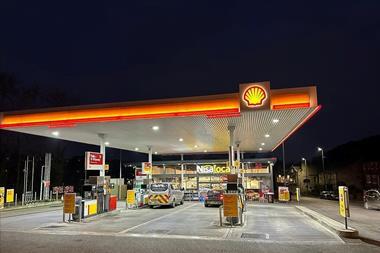
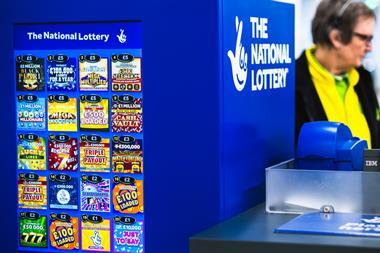

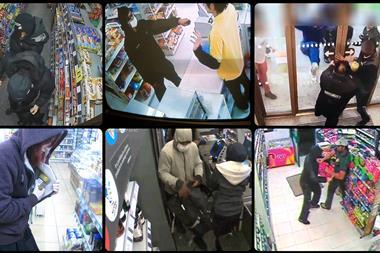
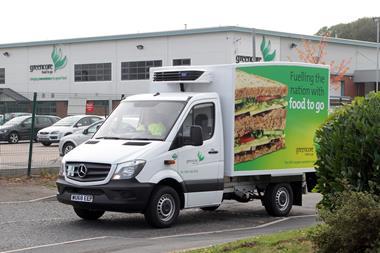




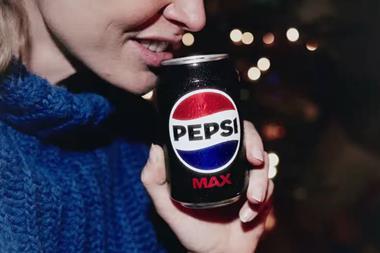

No comments yet